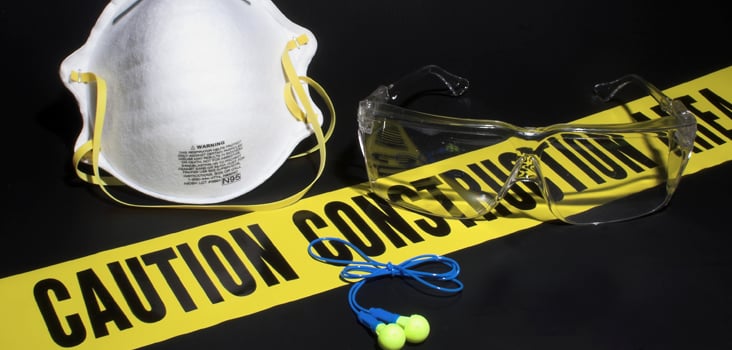
OSHA Regulations Construction Workers Need to Know
Construction is a vital industry, but heavy machinery, hazardous heights, and loud worksites also make it one of the most dangerous. Even with a high priority on safety, accidents still happen – especially when hazards come with the job description. The Occupational Safety and Health Administration (OSHA) reported that 21% of worker deaths in 2016 were in the construction industry.
To help employers keep their workers safe, OSHA has established an evolving set of regulations to address construction worksite safety concerns. These regulations cover everything from how to handle specific tools to the maximum permissible exposure level to noise and chemicals.
There are too many regulations to cover in one article, but we’d like to highlight some of the big ones that seem to cause companies the most trouble. Here are some important OSHA regulations for the construction industry, and some simple tips to follow them.
Respirable Crystalline Silica
About two million construction workers are exposed to crystalline silica every year, and high levels of exposure can cause serious medical conditions. OSHA released a final rule in 2016 to limit the amount of silica workers can be exposed to on the job.
The rule’s provisions require employers to use water or ventilation engineering controls, provide respirators when necessary, and limit access to high exposure areas. Highly exposed workers should be provided with medical exams and training on how to limit exposures.
Fall Protection
Falls are one of the most common causes of work-related injuries and deaths in the construction industry. They’re often caused by unstable work surfaces and failure to use the right protection equipment. OSHA has many fall protection regulations to help prevent employees from falling off overhead platforms, elevated work stations, or into holes in the floor and walls.
While you can view all the fall protection requirements on OSHA’s website, here are a few focus points for employers to keep their workers from falling:
- Fall protection is required for elevations of six feet or higher in the construction industry
- If employees are working over dangerous equipment and machinery, fall protection is required regardless of the fall distance
- Railings, toe-boards, or floor hole covers should be used to guard every floor hole
- Guard rails and toe-boards should be placed around every elevated, open-sided platform, floor, or runway
- Certain jobs may require a safety harness and line, safety nets, stair railings, or hand rails
Personal Protective Equipment
To minimize exposure to workplace hazards, employees are expected to use personal protective equipment (PPE) on the job. OSHA standards address what equipment is necessary for different job functions, proper use of equipment, and even the quality expected from equipment.
The word “equipment” sounds hefty, and sometimes it is. PPE can include respirators, boiler suits, or gauntlets, but it can also be as simple as hard hats, earplugs, or safety glasses. Ensuring that employees are wearing the correct PPE is one of the simplest ways to avoid workplace injuries.
For proper use, personal protective equipment should be:
- Safely designed and constructed
- Well-maintained
- Fitted properly and comfortably to the worker
For PPE training, employees should be told:
- When it’s necessary
- How to properly put it on, adjust, wear, and take it off
- The limitations of the equipment
- Proper care, maintenance, useful life, and disposal
Scaffolding
Scaffolds are meant to be a safety measure for fall prevention, but they’re often cited as a hazard when not handled correctly. In a Bureau of Labor Statistics study, 72% of workers injured in scaffold accidents attributed the accident either to the planking or support giving way, to the employee slipping, or to the employee being struck by a falling object – all of which could be controlled by compliance with OSHA standards.
Follow these scaffolding tips to reduce the risk of injuries:
- Scaffolds should be able to carry their own weight and four times the weight of their intended load
- Equip the scaffold with guardrails, mid-rails, and toe-rails
- Scaffolds should be erected on solid footing – do not use items like boxes, barrels, bricks, or concrete blocks as scaffold footing
- Inspect the scaffold for any braces, brackets, trusses, screw legs, or ladders in need of repair
- Teach workers about the hazards of using diagonal braces as fall protection
If you’re an employer or safety manager in the construction industry, it’s important to stay updated on OSHA regulations and make sure your worksite is compliant. Not only will you avoid citations – you’ll reduce the risk of injuries for your employees, keeping them safe and healthy.
Need help? Concentra is a national work health provider, with extensive knowledge of OSHA regulations. We can help prevent injuries, or treat them when an accident occurs. Talk to one of our work health experts to learn more about our occupational health services.



